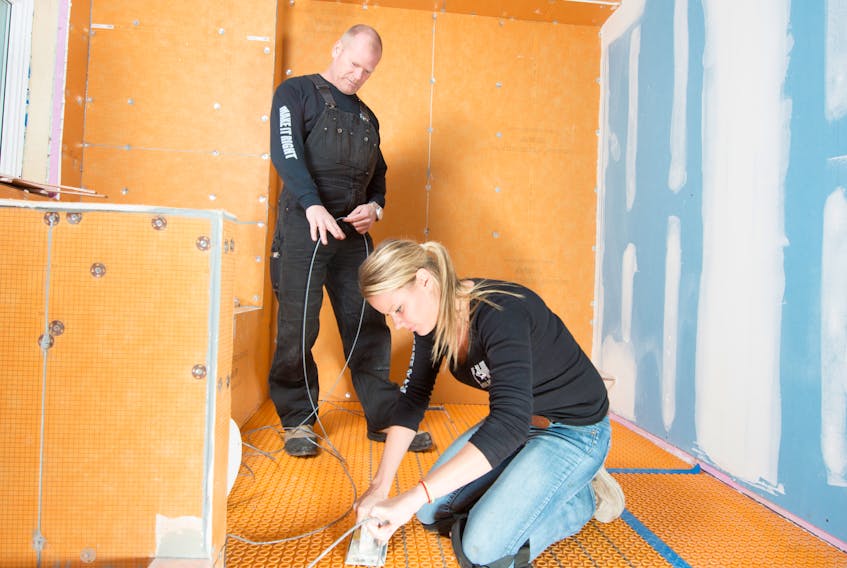To me, a bathroom is definitely a renovation that you don’t want to cut corners on. Each piece needs to be selected and installed carefully — and that includes making sure it’s watertight. If you’re not careful, your bathroom can become a breeding ground for mould and mildew, so you need to take steps to mitigate that.
Material selection plays a big role in that, but it also needs to be installed properly.
Take your bathroom floor, for instance. You can put down waterproof flooring, but if what’s underneath the tile isn’t properly guarded, you can still develop mould.
Are you ready to show your bathroom floors a little love? Here are a few things to keep in mind:
Can you put tile on tile?
Here’s a shortcut that I see which drives me absolutely nuts. Some homeowners and contractors think you can lay your new tile directly over your existing tile to save some time. Why do I hate this? Well, for one thing, you’re just asking for your new tile and grout to crack — so that brand new floor isn’t going to keep it’s look for very long.
But the bigger issue is that without tearing up the existing floor, you can’t properly judge the state of the underlay. Tear up the old, assess the state of the subfloor and fix what needs fixing. A bathroom provides the right conditions for mould spores (moisture, air and a source of food) and your tile might be covering up a hidden issue that you’ll want to fix.
Tiling over the old floor may save you some money in the short term, but when you have to tear it all up again and do it properly, how much will it cost then?
Prepping your floor for tile
Like I said, if you’re retiling, I hope you’re tearing up the existing stuff to scope out the health of what’s going on underneath. I’ve seen a lot of tile jobs go wrong for the simple fact that the floor wasn’t level. By taking the extra time to properly make the floor level and true, you can prevent cracks, dips, and even squeaks in your bathroom floor. Plus, tile installation becomes much easier with a level floor.
Assuming your subfloor is in good shape and level, your next step is waterproofing. Put down a layer of unmodified thin set mortar on your substrate which you use to bond your waterproof, uncoupling membrane. Then add another layer of thin-set mortar on top of the membrane and, finally, you place your tiles. We don’t use modified thin-set mortar because it relies on air to cure properly. The tile and waterproof membrane don’t breathe. That means no airflow, and it would take forever to dry.
All floors expand and contract with moisture content. The substrate will expand and contract — and when this happens, you’ll start to see your tiles and grout crack. The uncoupling membrane is key, because it allows the substrate to expand and contract at its own rate, without affecting the tile layer above. You don’t want to skip this step.
Choosing your tiles
I’m a fan of using porcelain tile in bathroom renovations. It’s a stronger tile, hardly absorbs moisture (I’m talking a less than one per cent absorption rate) and most have a continuous colour throughout, which I really like. If you’re not using porcelain, make sure you check the porosity rating of your tile — and also ensure you protect it against water.
Floor tiles comes in varying sizes, but can you go with just any size for your space? Big tiles can make a small bathroom seem smaller, but so can small tiles (because there will be way more grout lines).
So what’s the solution?
Well, medium-sized tiles are an option. Tiles with rectified edges (that is, tiles cut to an exact size) with the same colour grout can create better flow, which won’t make your space feel out of scale.
Finally, always keep a box of extra tiles handy in case you have to replace one in a few years. Replacing a broken tile is a pretty simple process, but finding an exact match years after you laid the original tile? That’s the hard part.
Mike has been making it right for homeowners for over 15 years on television. To learn more, visit makeitright.ca
Copyright Postmedia Network Inc., 2019









